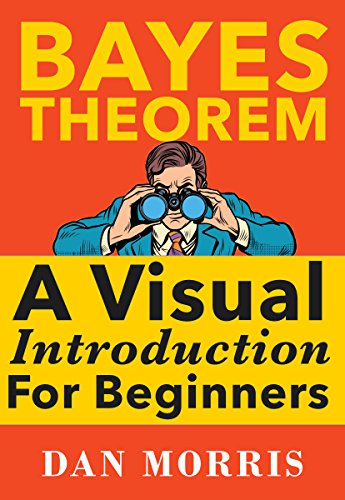Bayes’ Theorem: A Visual Introduction For Beginners with Examples by Dan Morris Link to heading
Summary Link to heading
“Bayes’ Theorem: A Visual Introduction For Beginners with Examples” by Dan Morris is an educational guide that aims to introduce readers to the fundamental concepts of Bayesian probability. The book emphasizes visualization and real-world examples to make Bayes’ theorem accessible to beginners. It breaks down complex statistical ideas into manageable sections, helping readers understand how to apply Bayes’ theorem in various contexts. The focus is on providing intuitive understanding through diagrams and step-by-step explanations.
Review Link to heading
Dan Morris’s approach to explaining Bayes’ theorem is both innovative and practical. One of the book’s main strengths is its use of visual aids, which helps demystify the abstract aspects of Bayesian statistics. This approach is particularly beneficial for visual learners and those new to statistical concepts. However, some readers with more advanced knowledge in statistics might find the content overly simplified. Overall, the book is well-received for its clarity and educational value, though it occasionally lacks depth for more seasoned statisticians.
Key Takeaways Link to heading
- Visualization is Key: Understanding Bayesian probability is made easier with visual aids, which help simplify complex concepts.
- Real-world Applications: The book provides examples of how Bayes’ theorem can be applied in practical situations, enhancing comprehension for beginners.
- Step-by-step Approach: By breaking down the theorem into small, digestible parts, the book helps build confidence in readers who may be apprehensive about mathematics.
- Accessible Language: The author uses straightforward language to make the introduction to Bayesian statistics less daunting.
Recommendation Link to heading
This book is ideal for beginners who have little to no background in statistics but are interested in learning about Bayes’ theorem and its applications. It is particularly recommended for students, educators, and professionals in fields where understanding probability can enhance decision-making skills. Those seeking a deeper, more technical exploration of Bayesian statistics might want to complement this book with more advanced materials.
